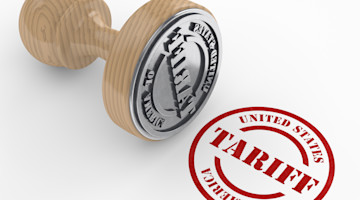The economic recovery in Europe has been underway for months, irrespective of supply chain bottlenecks and delays, and the machine tool industry is no exception. As we kick off 2022, we take a general look at some macroeconomic data, projections, and where we see opportunities and various other trade and regulatory items of interest. For specifics and other tidbits, read on.
Europe’s GDP growth for 2021 is widely accepted to have been 5%, with a forecast of 4.3% growth in 2022.
According to the European Machine Tools and Manufacturing Technologies Association, CECIMO, the machine tool industry had a good 2021 in that it was able to largely recuperate from a disastrous 2020. The 2nd and 3rd quarters of 2021 were particularly strong, where orders increased 120% YOY.
Oxford Economics forecast machine tool consumption of the main European countries would increase by 10.5% in 2021, and all the preliminary data supports that. This would, however, still be below the peak consumption of 2018 and 2019. They also forecast an increase for Europe of 15.2% in 2022, above the forecast for the increase in total global consumption.
Taken as a group, 15 European countries satisfy about 30% of the $68-billion global consumption of machine tools (2021 estimate). Germany, Italy, France, and Switzerland are the largest European consumers of manufacturing technology, with Austria and Poland making significant contributions as well. It is important to note that European domestic consumption of machine tools cannot be fully satisfied by domestic production or inter-European trade. There are significant opportunities for U.S. exporters.
At present, European manufacturing continues to expand, and the business climate is optimistic. The capacity utilization of all major machine-tool-using sectors seem to have recovered, and these sectors show positive investment growth rates. The highest growth rates in 2022 are expected in the aerospace, automotive, and automotive parts sectors. The automotive trend is, of course, toward e-mobility.
Other beneficiaries of the improving business environment are the medical equipment and renewable energy sectors. The supply side of the equation is straining to keep up with the rising demand, creating opportunities for manufacturing technology providers.
While it acknowledges the need to maintain fair-trade rules, the European Union has always been keen to protect the interests of its member countries. Companies exporting to the EU markets are aware that to freely circulate within the single unified market, goods need to conform to the European standards requirements. These arise from regulations dating back to 2006. However, they are now under review and revision. Concerns have been expressed that some requirements may be very challenging for small and medium-size manufacturers of machine tools who form the core of machine tool manufacturing in Europe and elsewhere. AMT will continue to monitor this situation and report on pertinent developments.
Further work has been carried out on the extension of the Harmonized System (HS) codes used in international trade that are applicable to technologies supplied by AMT members. As a result of this, additive manufacturing has acquired a standalone ISO standard (TC 261) and is now included in HS tariff code 8485, effective January 2022.
The EU and United States are involved in talks for a limited trade agreement focusing on industrial goods. The machine tool community in Europe has already been satisfied that the United States agreed to no longer apply Section 232 tariffs on a certain amount of EU exports to the United States of steel and aluminum, beginning January 2022.
In June 2021, the Trade and ��������ֱ�� Council (TTC) was launched by the United States and EU “to coordinate approaches to key global trade, economic, and technology issues and to deepen transatlantic trade and economic relations based on shared democratic values.” It offers a platform for cooperation in areas highly relevant for the machine tool sector, such as emerging technology standards and securing supply chains. The solutions are bilateral but should ultimately help U.S. manufacturers, as they would ensure an easier flow of American goods to the European Union and the participation of U.S. companies in production processes in the EU. The inaugural meeting was held in Pittsburgh last September and addressed such topics as semiconductor supply chains, investment screening, export controls, and artificial intelligence.









